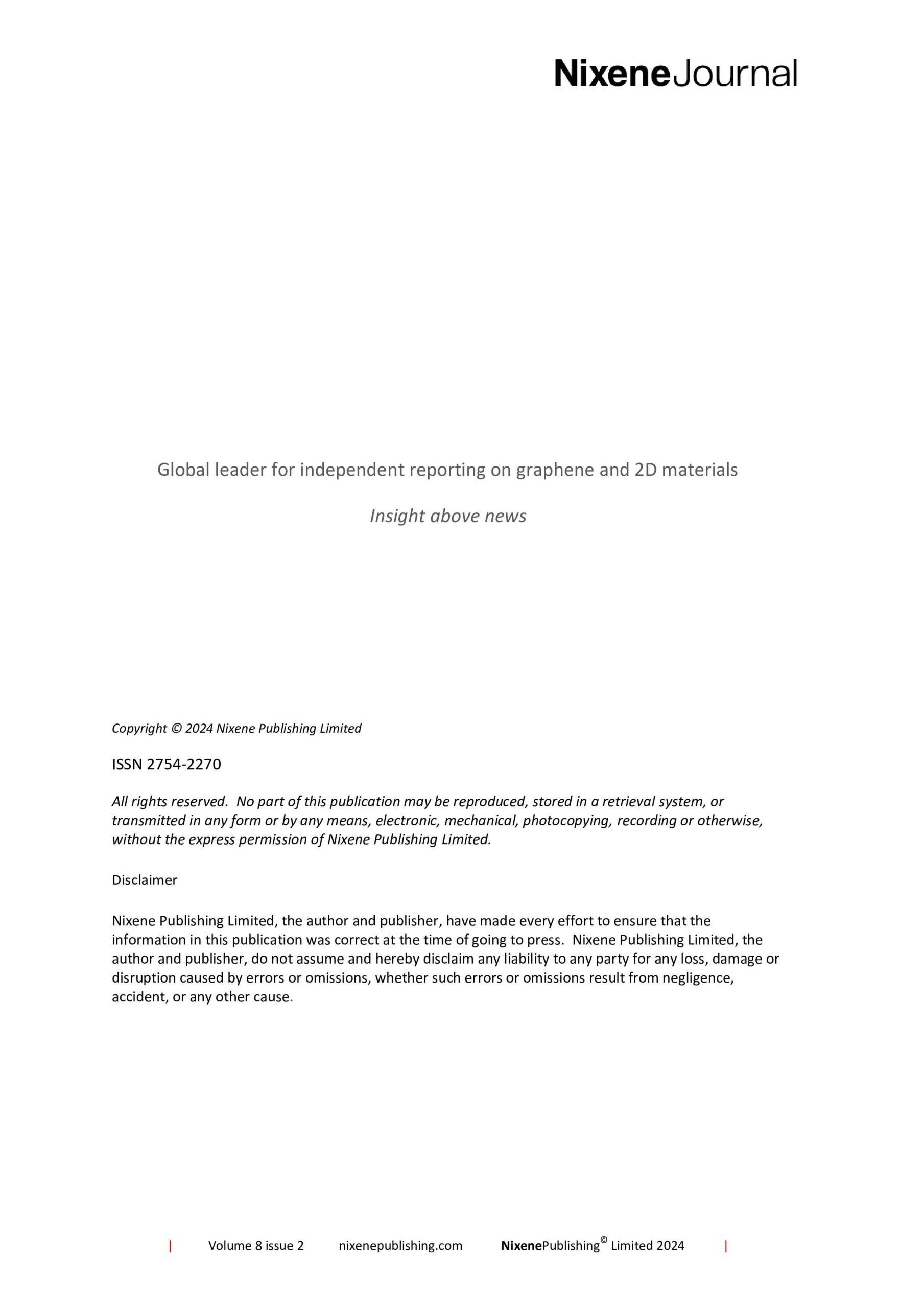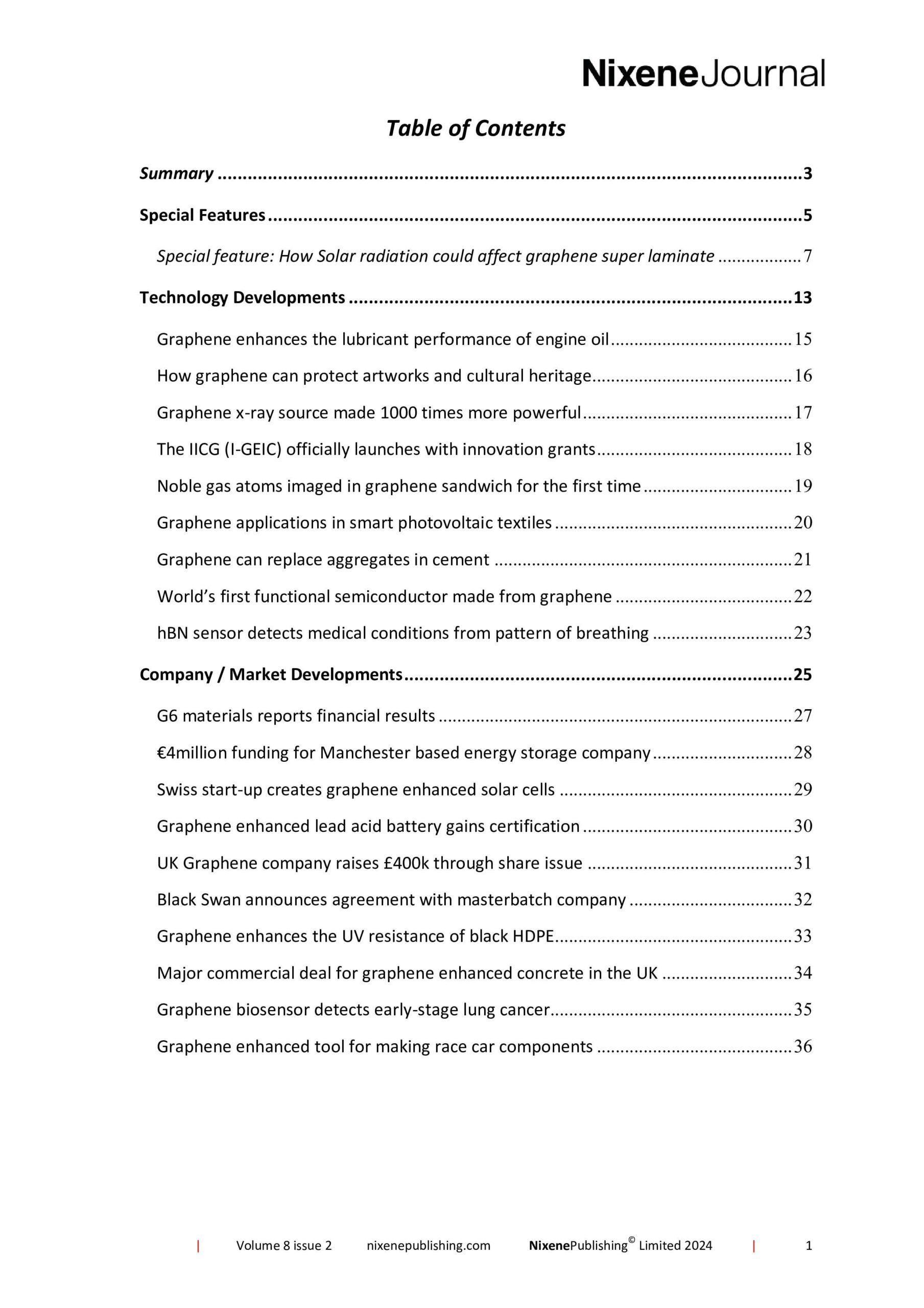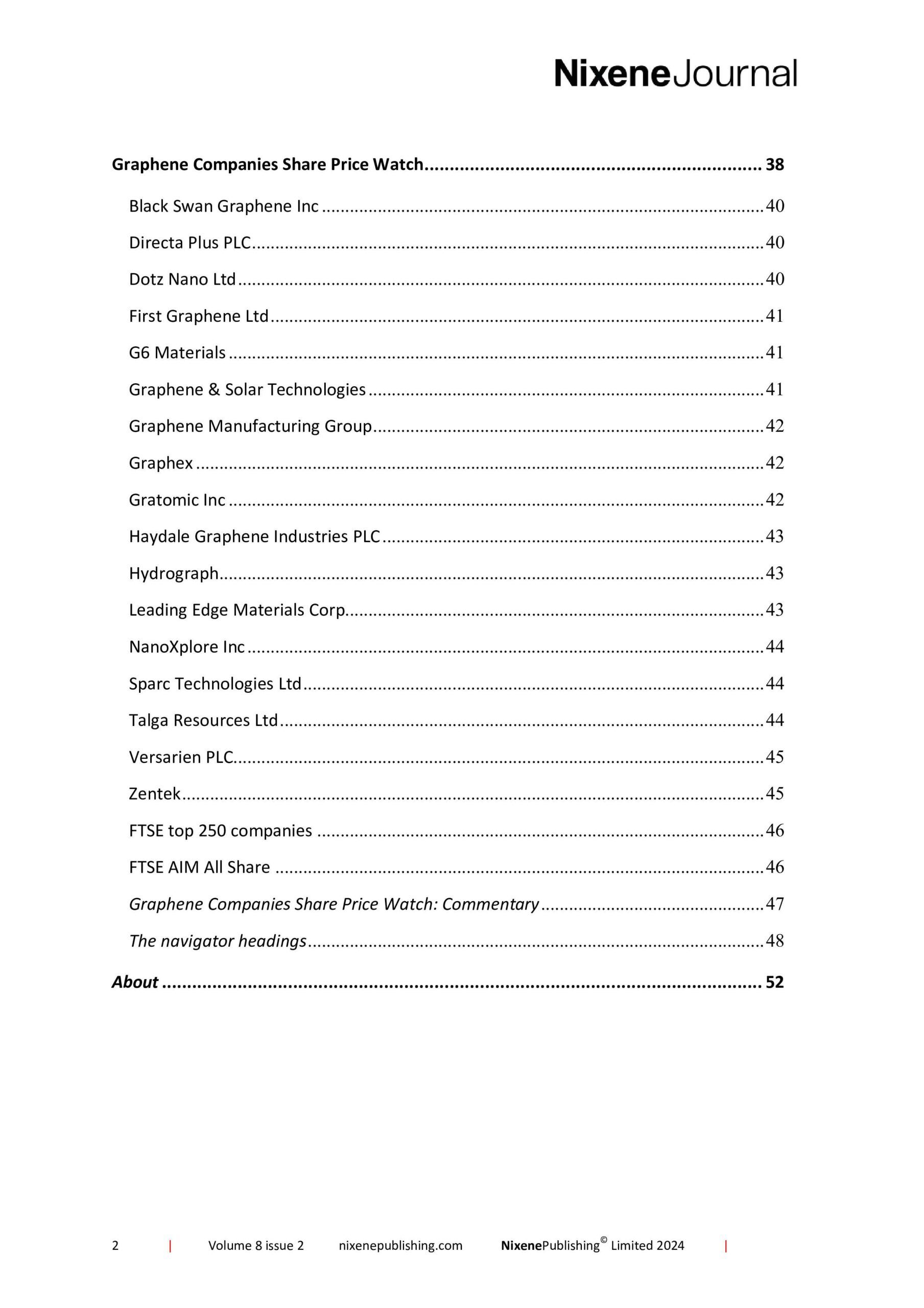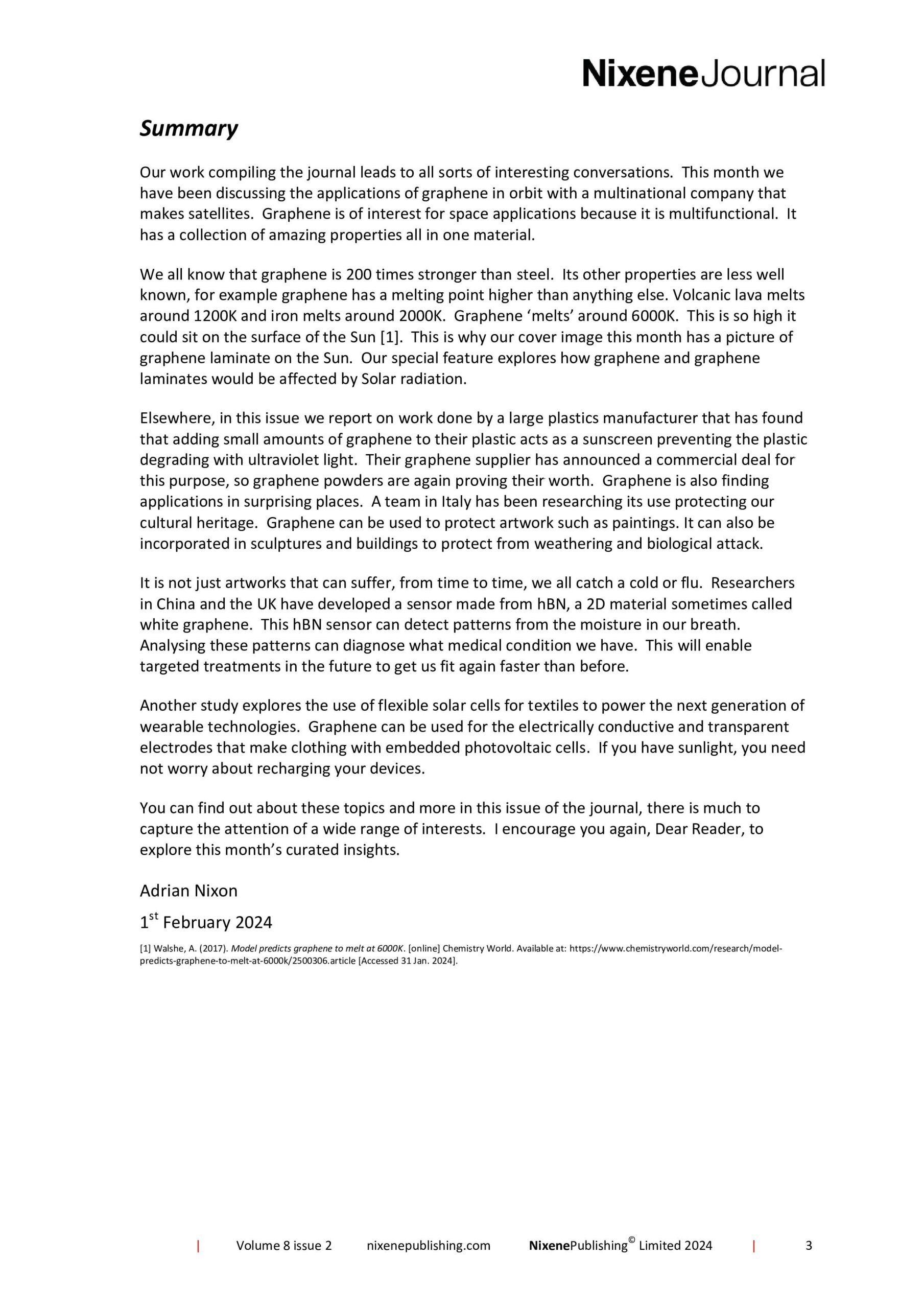Description
Our work compiling the journal leads to all sorts of interesting conversations. This month we have been discussing the applications of graphene in orbit with a multinational company that makes satellites. Graphene is of interest for space applications because it is multifunctional. It has a collection of amazing properties all in one material.
We all know that graphene is 200 times stronger than steel. Its other properties are less well known, for example graphene has a melting point higher than anything else. Volcanic lava melts around 1200K and iron melts around 2000K. Graphene ‘melts’ around 6000K. This is so high it could sit on the surface of the Sun [1]. This is why our cover image this month has a picture of graphene laminate on the Sun. Our special feature explores how graphene and graphene laminates would be affected by Solar radiation.
Elsewhere, in this issue we report on work done by a large plastics manufacturer that has found that adding small amounts of graphene to their plastic acts as a sunscreen preventing the plastic degrading with ultraviolet light. Their graphene supplier has announced a commercial deal for this purpose, so graphene powders are again proving their worth. Graphene is also finding applications in surprising places. A team in Italy has been researching its use protecting our cultural heritage. Graphene can be used to protect artwork such as paintings. It can also be incorporated in sculptures and buildings to protect from weathering and biological attack.
It is not just artworks that can suffer, from time to time, we all catch a cold or flu. Researchers in China and the UK have developed a sensor made from hBN, a 2D material sometimes called white graphene. This hBN sensor can detect patterns from the moisture in our breath. Analysing these patterns can diagnose what medical condition we have. This will enable targeted treatments in the future to get us fit again faster than before.
Another study explores the use of flexible solar cells for textiles to power the next generation of wearable technologies. Graphene can be used for the electrically conductive and transparent electrodes that make clothing with embedded photovoltaic cells. If you have sunlight, you need not worry about recharging your devices.
You can find out about these topics and more in this issue of the journal, there is much to capture the attention of a wide range of interests. I encourage you again, Dear Reader, to explore this month’s curated insights.
Adrian Nixon
1st February 2024











